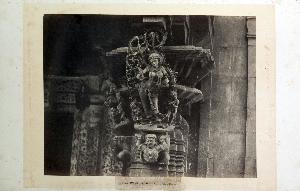Dr. William Henry Pigou
Dr. William Henry Pigou;William Henry Pigou
Place: Amiens
Born: 1818
Death: 1858
Biography:
Dr. William Henry Pigou, also known as Dr. William Henry Pigou, was an English surgeon and pioneer photographer in India. He was born in Amiens, France in 1818 and died in 1858. Pigou was of Huguenot derivation and his family originated from Amiens in France. The surname Pigou is related to pique or pike, and the Pigou arms consist of three pike heads.
Early Life and Career
Pigou served in the Indian Medical Service in Bombay from 1841-1858 and succeeded Thomas Biggs as official Government Photographer, Bombay Presidency in 1856-1857. He spent 1856-1857 working for the colonial government recording ancient Indian monuments.
Artistic Contributions
Pigou's work is notable for its contribution to the field of photography in India during the colonial era. His photographs provide valuable insights into the culture and architecture of India during that time. Some of his works can be found on Wikioo.org, which showcases a collection of artworks from various artists, including Pigou.
Notable Artists and Museums
Other notable artists who share similar backgrounds and interests include Frédéric Auguste Bartholdi, the designer of the Statue of Liberty, and William De Morgan, a British art potter and tile designer. Their works can be found in various museums such as the Musée Carnavalet in Paris, which is dedicated to the history of Paris and its inhabitants.
Legacy
Pigou's legacy extends beyond his contributions to photography and medicine. He is also notable for being the namesake of the Baumol effect, a concept in economics that describes the relationship between labor productivity and technological progress. His work has been recognized by various institutions, including the List of Huguenots on Wikipedia, which highlights the achievements of notable Huguenots throughout history.
- Huguenot derivation and his family originated from Amiens in France.
- Pigou served in the Indian Medical Service in Bombay from 1841-1858.
- He succeeded Thomas Biggs as official Government Photographer, Bombay Presidency in 1856-1857.
- Pigou spent 1856-1857 working for the colonial government recording ancient Indian monuments.
Pigou's life and work serve as an inspiration to artists, photographers, and medical professionals alike. His contributions to the field of photography and his legacy as a pioneer in India continue to be recognized and celebrated today. For more information on Pigou and other notable artists, visit Wikioo.org or explore the List of Old Harrovians on Wikipedia.


